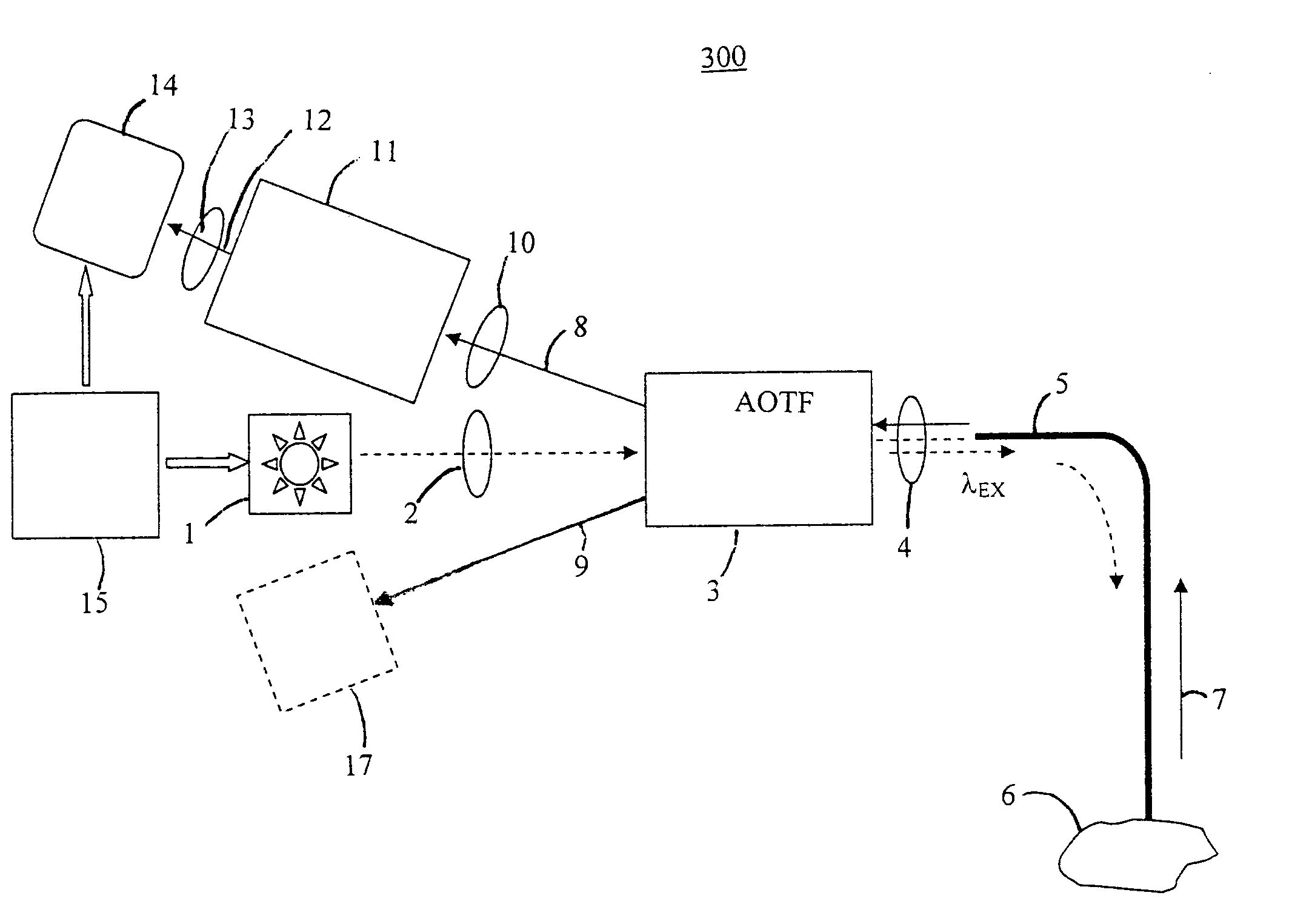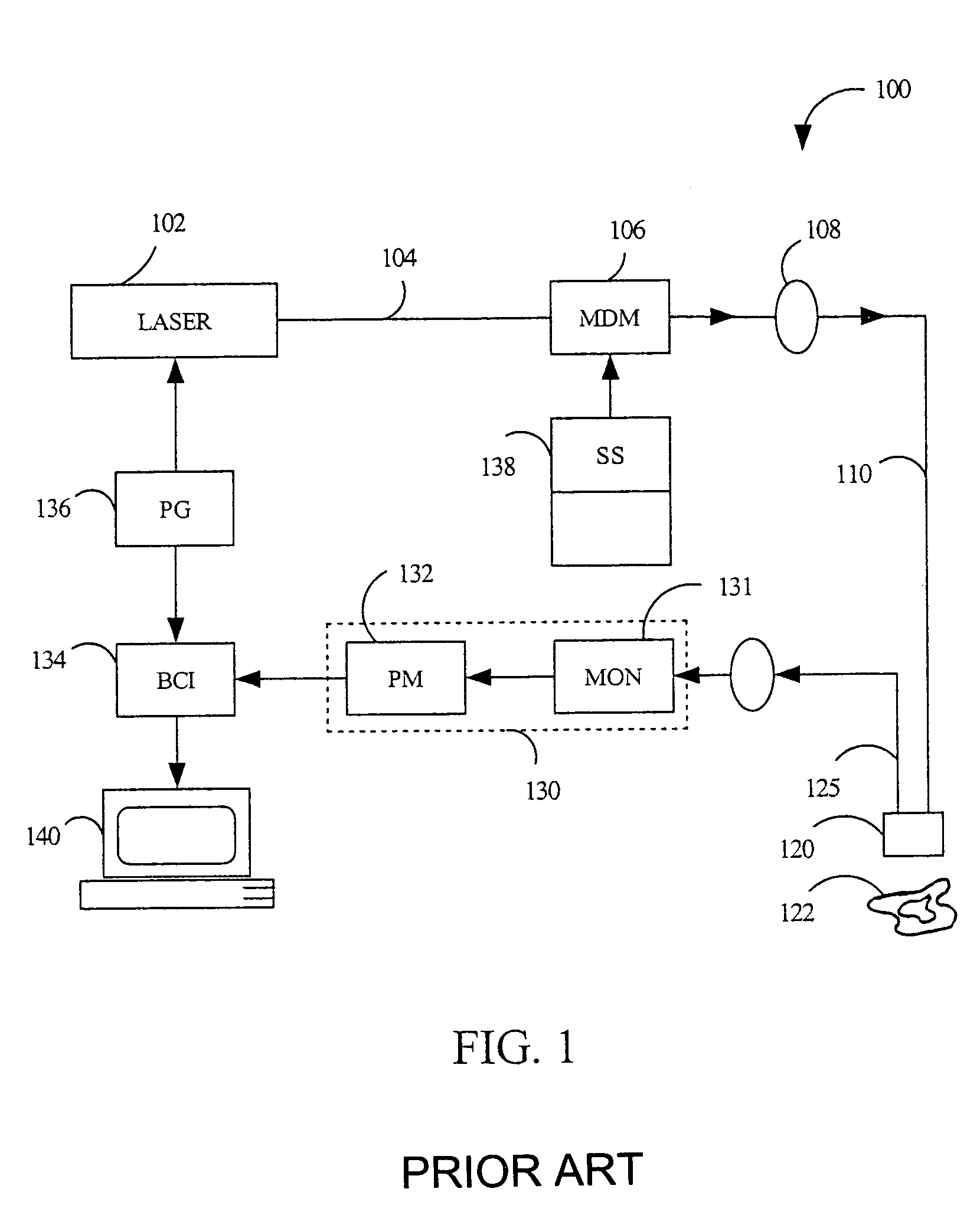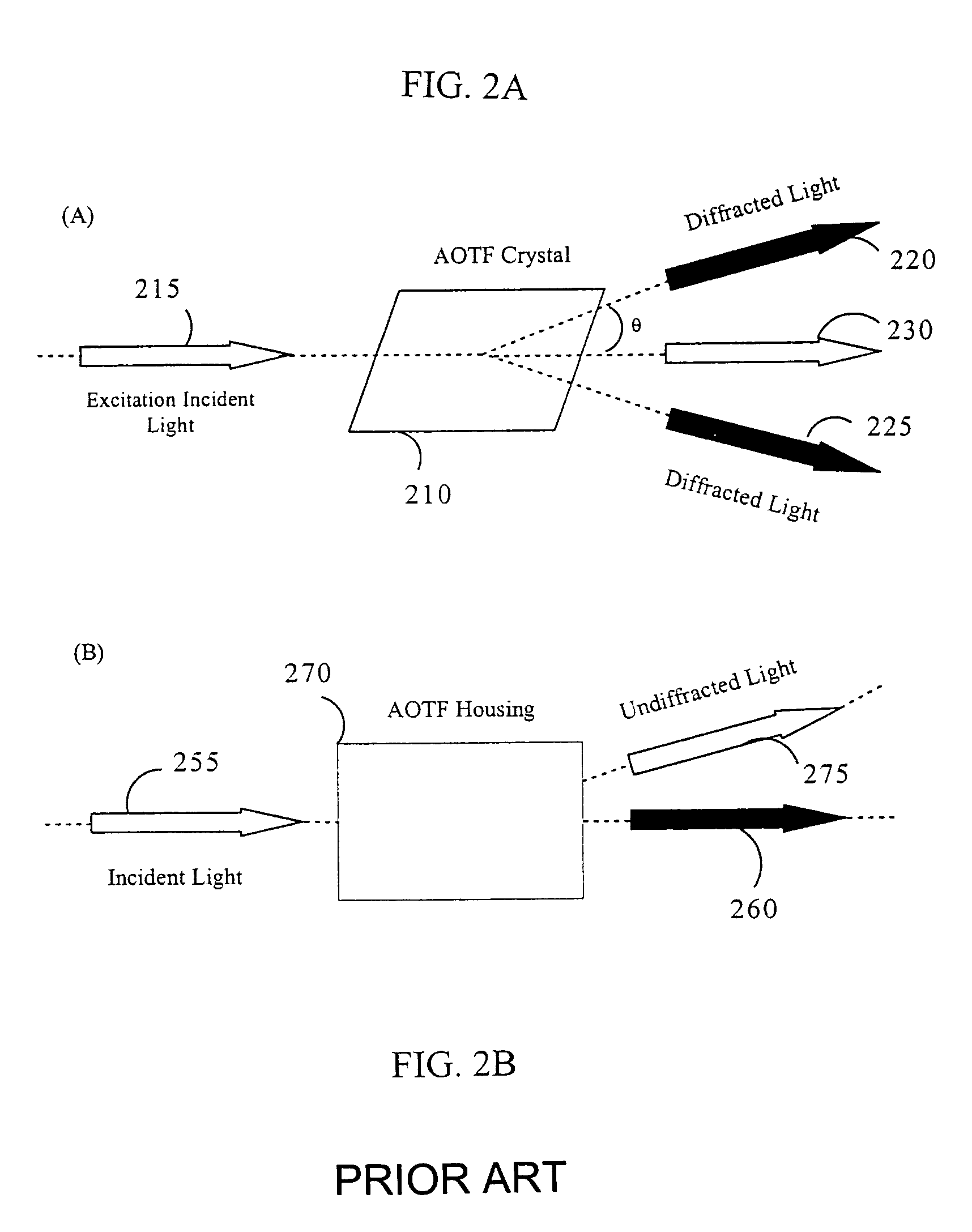Advanced synchronous luminescence imaging for chemical and medical diagnostics
a luminescence imaging and synchronous technology, applied in the field of imaging, can solve the problems of not providing the spectral specificity needed to provide clear “spectral fingerprints, providing poorly resolved spectra, and not often providing spectral specificity, so as to improve quantitative measurement accuracy, increase fluorescent signal levels, and improve the effect of overlap
- Summary
- Abstract
- Description
- Claims
- Application Information
AI Technical Summary
Benefits of technology
Problems solved by technology
Method used
Image
Examples
examples
[0097]It should be understood that the examples and embodiments described herein are for illustrative purposes only and that various modifications or changes in light thereof will be suggested to persons skilled in the art and are to be included within the spirit and purview of this application. The invention can take other specific forms without departing from the spirit or essential attributes thereof.
[0098]FIGS. 12A and 12B show examples of reflective and fluorescence imaging results, respectively, obtained from an exemplary AOTF system according to the invention. A subject was provide having a skin surface that included a freckle. The purpose of the demonstration was to determine whether the freckle was cancerous. It is known that cancerous freckles fluoresce differently as compared to non-cancerous freckles and normal skin tissue.
[0099]FIG. 12A shows a recording of the spectral image of the skin surface using excitation at 488 nm. The AOTF (Brimrose) wavelength was also set at ...
PUM
| Property | Measurement | Unit |
|---|---|---|
| wavelengths | aaaaa | aaaaa |
| wavelengths | aaaaa | aaaaa |
| radio frequency | aaaaa | aaaaa |
Abstract
Description
Claims
Application Information
 Login to View More
Login to View More - R&D
- Intellectual Property
- Life Sciences
- Materials
- Tech Scout
- Unparalleled Data Quality
- Higher Quality Content
- 60% Fewer Hallucinations
Browse by: Latest US Patents, China's latest patents, Technical Efficacy Thesaurus, Application Domain, Technology Topic, Popular Technical Reports.
© 2025 PatSnap. All rights reserved.Legal|Privacy policy|Modern Slavery Act Transparency Statement|Sitemap|About US| Contact US: help@patsnap.com



